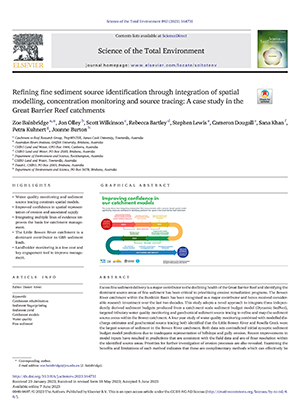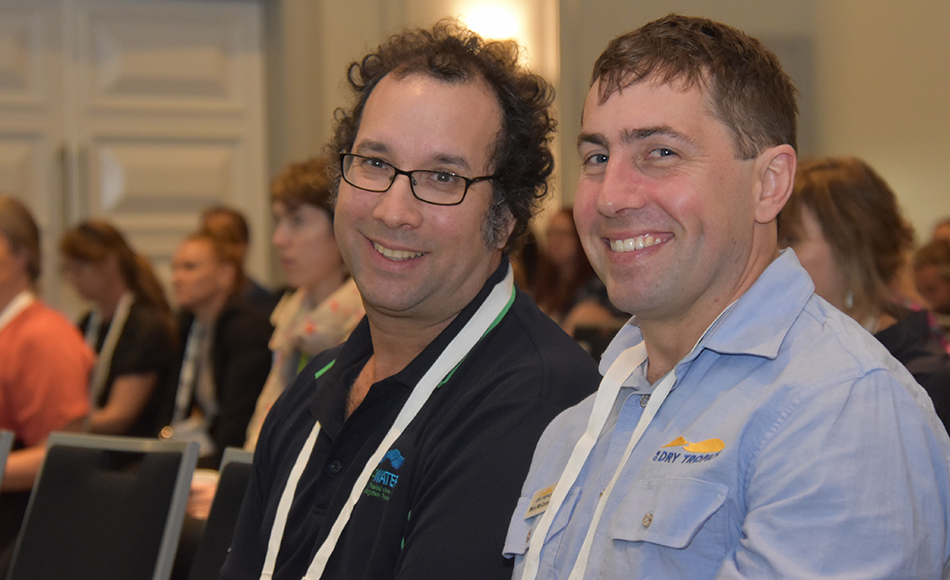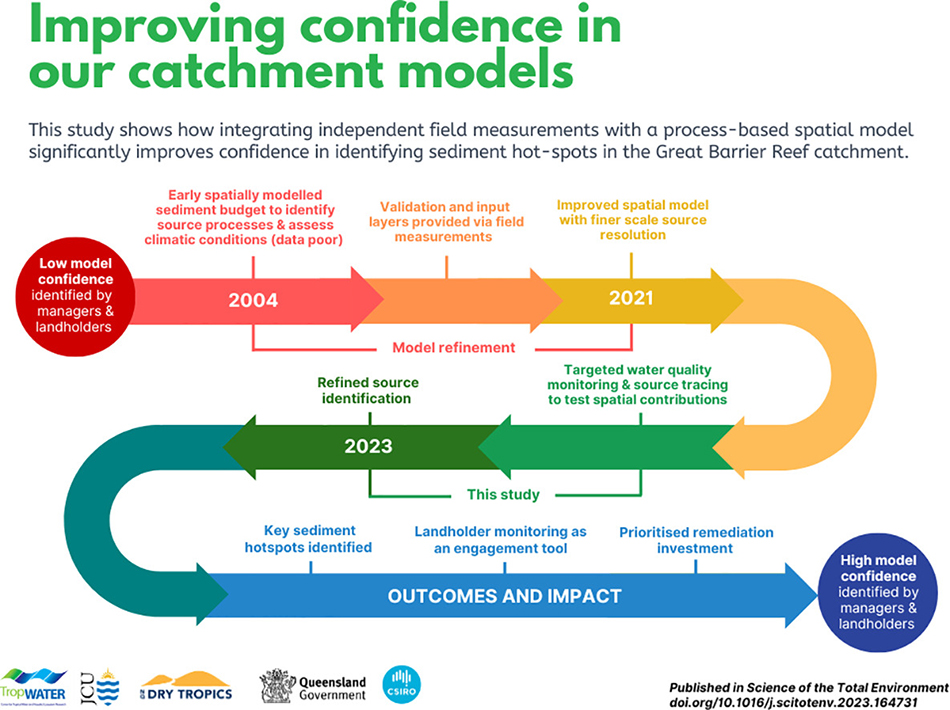Community science validates sediment reduction modelling
James Cook University TropWATER’s Dr Stephen Lewis and NQ Dry Tropics Drought Resilience Coordinator Marc McConnell told an audience of scientists how community involvement in a water quality monitoring initiative has helped validate catchment sediment modelling.
Conducted as part of the Landholders Driving Change project, nine landholders from the Bowen and Collinsville region collected water samples at different locations on their properties after rain, and provided the samples to TropWATER for analysis.
Under a CSIRO-JCU Water Quality Partnership, this data was used to ground truth scientific catchment models which highlight priority areas to target for sediment reduction activities. This information provides greater confidence for decision makers when investing in catchment management.
To find out more about this community driven approach:
ABOVE: TropWATER’s Dr Stephen Lewis (left) with NQ Dry Tropics Drought Resilience Coordinator Marc McConnell.
Forum to discuss real world solutions
SETAC-AU brings together scientists from a variety of disciplines in research, industry and government to share and discuss their knowledge and research to support real-world solutions for environmental management and protection.
Central to addressing the environmental challenges is the effective translation of research into tangible end-user applications for stakeholders in research, industry, government and community sectors.
LEFT: The LDC Community Water Quality Monitoring Group data is shared with the Queensland Government team. The results are used to enhance the Paddock to Reef Integrated Monitoring, Modelling and Reporting Program (Paddock to Reef Program) model and improve confidence in load estimates and results from the BBB catchment.



